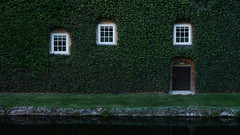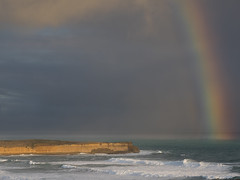What will 2011 bring for the photography world – and what should it bring?
Written by Gary on January 3rd, 2011
2010 showed us a glimpse of what is likely to come with:
- the continued rise in popularity of large sensor compact digital cameras with interchangeable lenses such as the Micro Four Thirds system by Panasonic and Olympus, and the systems by Sony and Samsung
- the increasing dominance of Panasonic in the quality of compact digital cameras
- the introduction of slate-type multi-touch devices such as the Apple iPad and the Samsung Galaxy.
- the improving HD video capabilities of dSLRs
- the need for better lenses to cope with increasing megapixel density in dSLR cameras – both Canon and Nikon embarked on serious revamping of their pro lenses – Olympus had already designed their pro lenses to cope with this increased megapixel density.
What can we expect in 2011?
- more of the same but with incremental improvements
- Canon and Nikon may finally decide to enter the mirror-less interchangeable lens compact camera markets which must surely be cannibalising their entry-level dSLR sales as well as compact digital camera sales – Nikon has been rumoured to be looking at a smaller sensor than Micro Four Thirds, while Canon’s “EIS” is rumoured to be approximately the same size sensor as Micro Four Thirds but in 3:2 aspect ratio.
- an Apple iPad II to correct a lot of the very annoying deficiencies of the initial iPad – see my many blogs of my frustrations.
- a multitude of iPad-like devices using Windows 7 and Android operating systems
- the Panasonic GH-2 should dominate the travel photography world given its versatility, relatively compact size, the best HD video of all hybrid/dSLR cameras, the best electronic viewfinder, a relatively fast AF system and touch-screen flip out/swivel LCD screen – what more could you want? (I can think of a few but this camera should satisfy the needs of most travel photographers).
What would I like to see?
- Panasonic and Olympus to bring in more lenses for Micro Four Thirds, in particular, more fast prime lenses – I would love to see a 10mm or 12mm f/2, a 50mm f/2 macro, a 100mm f/2 macro and a 200mm f/3.5 OIS lens – oh, and there is need for a cheaper consumer level macro lens – perhaps their 35mm macro?
- Olympus to give us a really compact Micro Four Thirds body as well as a semi-pro level weatherproofed body similar to the GH-2 (given that it seems Olympus may not be producing any more entry level dSLRs such a body is highly likely).
- Olympus to create a macro flash system for Micro Four Thirds.
- a Windows 7 device that works as nicely as an iPad but without all the problems of an iPad.
- a global electronic shutter in a Micro Four Thirds to finally give us silent photography for use in weddings, classical music performances, etc, as well as the possibility of high burst rates such as 10-40 fps still photography.
- Panasonic and Olympus in Australia to start pricing their products to reflect their pricing in $US – why should Australian’s pay almost twice as much when hour dollar is par with the $US?
Posted in cameras |
Tags: Apple, Canon, Four Thirds Micro, Nikon, Olympus, Panasonic
Both comments and pings are currently closed.











Agree on all points. Panasonic and Olympus’ lens strategies leave a lot to be desired. Why after two years do we not have anything suitable for low depth of field portraits (one of the main reasons people seem upgrade from compacts), yet we have a 600mm equivalent zoom), a fisheye, and a 3D lens? what?
Electronic shutter sounds great. I heard they were experimenting with this, but could be a long way off.
micro four thirds shutter is just horrendous compared to the quiet and pleasant sounding shutter of a small DSLR.
Also a provision for wireless remotes and longer exposure time in bulb mode wouldn’t go astray.
Very good point about the pricing.
More compact m43 bodies would be nice, but the more I think about it, the less sense it makes, given the bulk of the weight is going to come from the lens, and the m43 lenses aren’t going to get any smaller (though more native lenses would help).
I don’t quite understand how the Sony NEX bodies can be smaller and have a smaller flange back distance (18mm compared to 20mm on m43) given the larger sensor. If the compromise is bigger lenses, this could be the downfall of NEX in my opinion.
If Canon and Nikon are really going smaller than DX/APS-C, that is an interesting move, given the use of APS-C in recent Sony, Samsung, Fujifilm and Sigma small cameras. It does suggest Olympus/Panasonic made the right move with smaller sensor. Just surprising from Nikon / Canon who already have established sensor sizes.